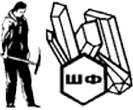Добрый день, Коллеги. Важное сообщение, просьба принять участие. Музей Ферсмана ищет помощь для реставрационных работ в помещении. Подробности по ссылке
Weaving a national map: a review of the U.S. geological survey concept of the national map / Создание национальной карты: обзор концепции национальной карты геологической службы США
This report responds to a request by the U.S. Geological Survey (USGS) that the National Research Council (NRC) review its concept of The National Map. The National Map is envisioned by USGS as a database providing “public domain core geographic data about the United States and its territories that other agencies can extend, enhance, and reference as they concentrate on maintaining other data that are unique to their needs” (USGS, 2001).
A motivation behind The National Map is the need to update aging national paper map coverage. Since 1807 the United States has recognized a federal government responsibility to develop and disseminate maps and charts to “promote the safety and welfare of the people” (Thompson, 1988). From its inception in 1879 the USGS has developed a central role in mapping the nation. Today the USGS’s primary topographic map series includes more than 55,000 unique map sheets, and 220,000 digital images. Although this ranks as a great, if unsung, scientific accomplishment, most of the nation’s map coverage is out of date. Paper map sheets in USGS’s primary map series are, on average, 23 years old (USGS, 2001). Map timeliness, a function of the rapidity and effectiveness of map revision, remains a critical national need. At the same time, events such as the September 11, 2001, terrorist attacks and recent natural disasters have shown that current information can save lives, and protect public and private property. The demand is great for up-to-date information in real time for public welfare and safety. <...>




